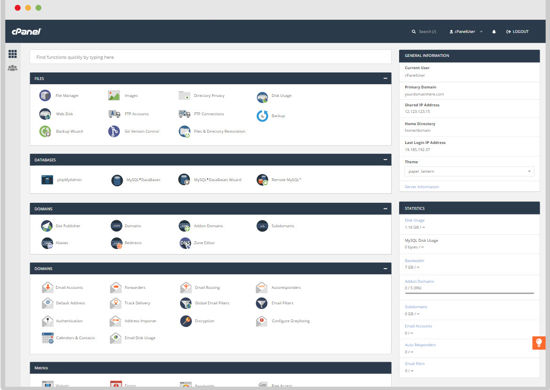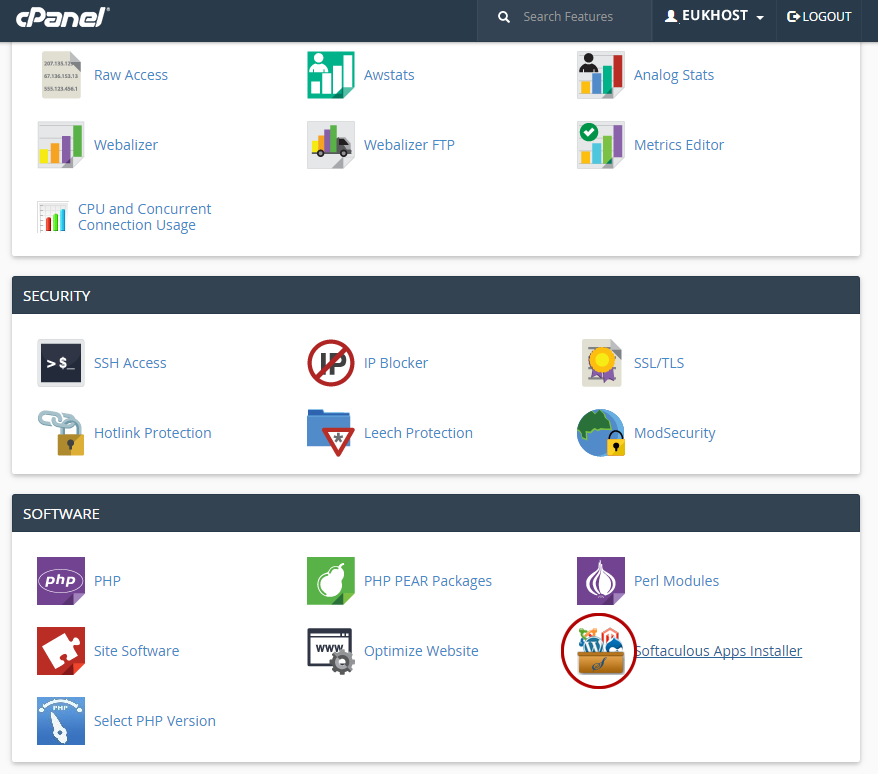
- Wordpress cpanel install#
- Wordpress cpanel zip file#
- Wordpress cpanel update#
- Wordpress cpanel password#
Run WordPress installation scripts, created your first WordPress admin user and named your website.Successfully updated the wp-config-sample.php file and renamed it to wp-config.php.Created a MySQL database and database user.

Wordpress cpanel install#
Once you are finished, click Install WordPress. Once you have set up your site, change this option. This will allow visits, but it will block search engine crawlers to index your website. You’re not planning to publish the website right away? Then you might want to check the Search Engine Visibility checkbox. If this fails, you can go back and edit and upload the wp-config.php file yourself. In each case, once the install scripts are initiated, WordPress will prompt you to enter database details and write them in a new wp-config.php file. If you uploaded WP installation files to a subfolder, browse to.If you uploaded the files to the root directory, browse to.To finish the installation, run the install script by browsing to your WP’s directory. When doing a document root installation, the wp-config.php file is located in the /home/cPanelAccountName/public_html directory. If you encounter database connection errors, verify that the information typed into the wp-config.php file is correct. Do NOT save the file with its default name. Save the completed file as wp-config.php. Copy them and replace the default wp-config-sample.php keys. The WP API will generate a unique phrase and key.


Enter your Unique Key and Salt under the section mentioned above.Ĭreate a Unique Key and Salt by visiting. While still editing the wp-config-sample.php file, find the Authentication Unique Keys and Salts section of the document.
Wordpress cpanel update#
Additionally, bear in mind that for most cPanel hosts, the DB_HOST value is ‘localhost.’ Update Default Unique Keys and Salts Make sure to include the prepended parts when typing the value for DB_NAME and DB_USER. ** The name of the database for WordPress */ĭefine('DB_PASSWORD', ' #') ** MySQL settings - You can get this info from your web host ** // The lines below are an example, and the information you insert may look different. To complete the process, you must edit the wp-config-sample.php file using a text editor.Īdmins need to insert four (4) pieces of information to complete the process. The database has been created, and the newly created superuser has been assigned to the database. Once this has been set up, you can navigate back to your_domain_/wordpress and complete the installation. There should be a database and a privileged user assigned to the database. To verify, go back and scroll down to view current databases. Click Make Changes to assign privileges to the user.Ħ. For the initial database user, select the All Privileges checkbox.ĥ. The next step would be to assign database privileges. Choose your newly created database under the Database drop-down menu and click Add.Ĥ. Under the User drop-down menu, select your newly created user.ģ. Find the Add User To Database section of the page.Ģ. The newly created user doesn’t have access to the database.ġ. Assign User to Database and Assign Permissions
Wordpress cpanel password#
Note your password, or store it in a password manager, such as KeePass. When finished, rename the WordPress folder to your desired name (e.g., MyBlog).Ģ. In a subfolder of your domain (e.g., your_domain_/site1).After the upload, all WP files and subfolders should reside in public_html. Upload all contents of the WordPress folder, but not the folder itself. In the root directory of your domain (e.g., your_domain_/).You need to decide on the location of your WordPress site. The public_html directory is your web root, the directory in which you want to store all your websites.ĥ. Find the File Manager tool and open it.Ĥ. Enter your user credentials and log in.ģ. You will find it by browsing to your_domain_/cpanel.Ģ. Upload WordPress Install Script to Serverġ. Note the location of the extracted content, and upload it to your web server.

Wordpress cpanel zip file#
Once the zip file has been downloaded, go to its directory and extract the entire archive.


 0 kommentar(er)
0 kommentar(er)
